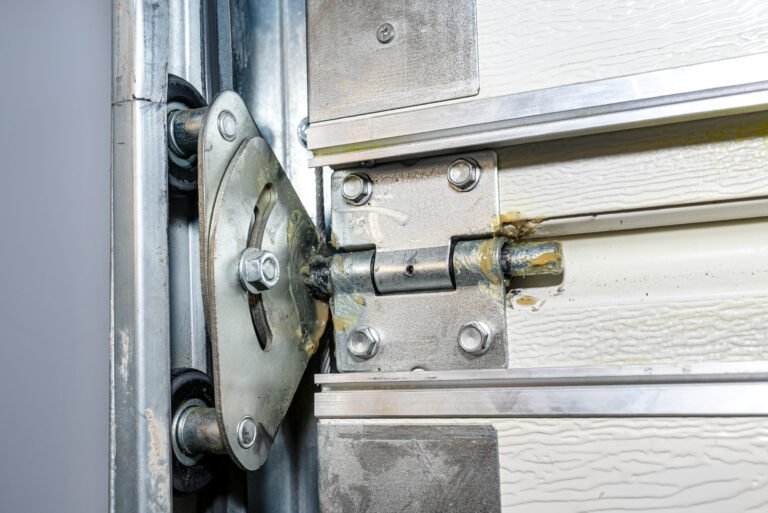Garage doors operate continuously and have their share of daily usage. Yet, we seldom realize the importance of maintaining the different garage door parts until they start giving those creaking sounds or don’t work properly. As unsafe as they become, a partially operating door may also disrupt the curb appeal!
So, how do you troubleshoot the garage door mechanism? With suitable garage door hinges! These small, swinging parts support sectional, residential, or commercial doors and facilitate easy moving and optimal control.
So, we surveyed the brochures and listed down five types of garage door hinges, along with some pros and cons for every door track. Let’s take a look!
What Is a Garage Door Hinge, and How Does It Work?
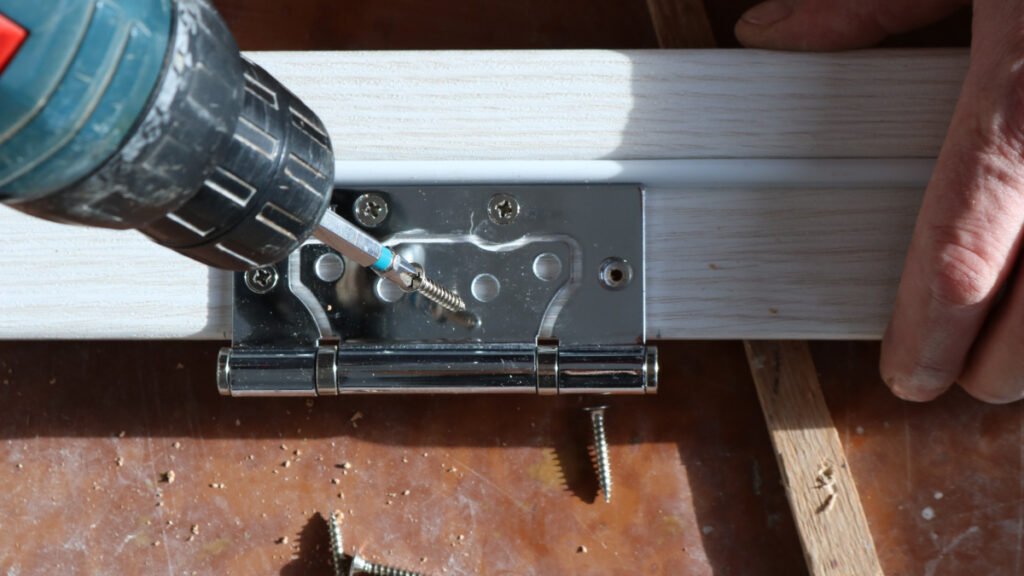
Garage door hinges are small, circulatory metal plates that bind the various sections of the shutter and direct them along the garage door track to open or close them as needed.
They anchor the edge of the door panel to the main bracket or the horizontal track, allowing the shutter to pivot along the free edge, thus operating it efficiently.
Garage Door Hinge Types for Fool-Proof Residential Doors
Different garage door hinges have different fittings, mechanisms, and pivot controls and might not suit every type of garage door. And while lightweight butt hinges are a go-to option for most doors, sturdier truck door hinges are ideal for heavy-duty garage doors.
So, let’s dig into the pros and cons of each door hinge and find the best fit for different garage door types.
1. Butt Hinges
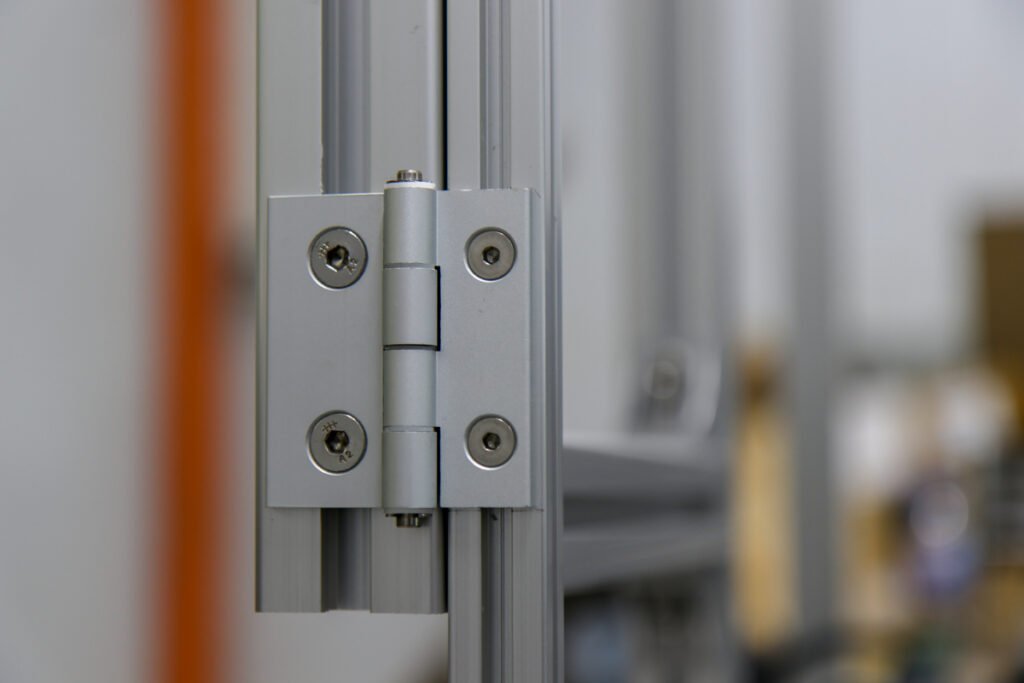
What Is It: A butt hinge is a simple, rectangular hinge with two equally-spaced metal leaves and a central hinge pin that rotates the door up to 180°.
Butt hinges are lightweight, durable, and affordable. These are used for a slender, 1 ⅜ or 2 ¼ thick door section and have a curled knuckle that distributes the weight to the frame.
Thus, they don’t buckle or dent easily and can adjust to different door heights and weights. Plus, they can hold ball bearings or torsion springs that can fully automate the door closing.
Further, they are classified into three types based on their operations and overall mechanism as given below:
- Rising Butt Hinges: These support the garage doors installed on sloping, uneven, or un-leveled land sites.
- Ball-bearing Butt Hinges: It braces a thicker and heavier wooden paneled or sectional garage door, allowing a broader pivot.
- Lift Butt Hinges: These create a strong foothold and are used to lift heavier doors during installation or any garage door hinges replacement.
Best Preferred For: Lighter side-hinged doors, Carriage doors, Mission, Sectional or Craftsman Doors.
| Average Lifespan | 15 – 20 years |
Average Cost | $2 – 5 for a pair, depending on the subtype |
| Prominent Materials | Brass, Stainless Steel, Aluminum |
Pros:
- Low Initial Cost.
- Available in a variety of finishes – Matte, Satin, and Polished Nickel to suit different garage door types.
- Come with flush-pin tips that are easy to conceal and look seamless.
- Resists corrosion, sagging, and warping.
Cons:
- Might need repairs or replacement with heavy use.
- Have a comparatively lesser, 1-year warranty.
You can apply some Lithium grease or White grease to repel dust from the grooves and enhance the durability of a butt hinge.
2. Strap Hinges
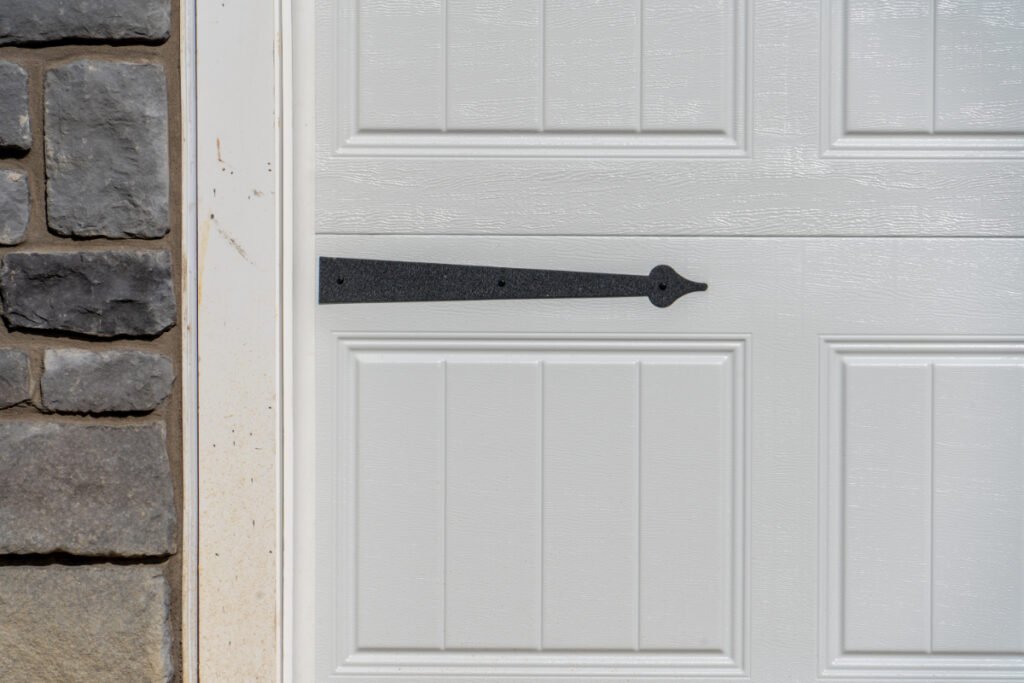
What Is It: Strap hinges consist of two long triangular straps that are screwed to the stationary door frame and the moving shutter for added stability and free door movement.
Strap hinges, also called gate hinges, are 4- inch long, leaved, flexible yet sturdier hinges that enhance your garage door’s curb appeal and security. These come in galvanized or plated finishes and ooze a rustic charm but might not suit contemporary doors.
Additionally, these hinges cannot be concealed but use less mounting space than any other garage door hinge.
Best Preferred For: Traditional swing-out doors, Carriage doors, Sectional garage doors, or Side-hinged doors.
| Average Lifespan | 20 – 25 years |
| Average Cost | $4 – 8 for a garage door hinge pair |
| Prominent Materials | Galvanized steel, Brass, Bronze, Pewter |
Pros:
- Provide extra stability and support for heavy-weight shutters.
- Come in a variety of shapes and ornamental designs according to decor.
- Light and Corrosion-resistant.
- Have a higher warranty of up to 10 years.
Cons:
- Might overlap, and imbalance the edges of thinner doors.
- Might be noisy if not appropriately maintained.
- Cost and Labor-intensive.
- Cannot be automated.
Pick rust-resistant chrome polished or brushed-nickel strap hinges for more durability in detached garages while choosing slightly decorative hinges to boost the visual appeal of attached garage doors.
3. Flush Hinges
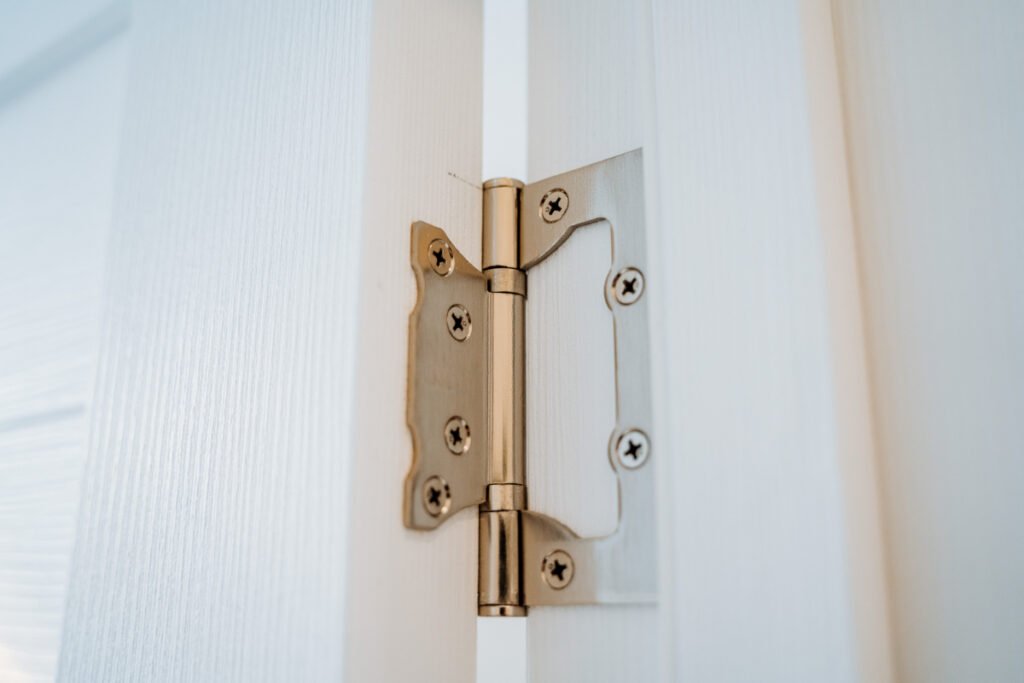
What Is It: Flush hinges are recessed, light-weight hinges with a simple lock and fit mechanism that joins and locks the hinge’s leaves when the door opens and provides more stability.
These hinges are space and cost-efficient and eliminate all the gaps between the shutter and the door frame, providing a seamless, contemporary look. However, these are not sturdy and cannot handle thicker, heavy-weight doors.
Nevertheless, they are the right tap for steel sheet doors and can be screwed or welded to the surface without any recession or drilling.
Best Preferred For: Side-hinged steel or wooden doors, slide-to-side doors, or a lightweight sectional door.
| Average Lifespan | 10 – 12 years |
| Average Cost | $2 – 3 for a hinge pair |
| Prominent Materials | Galvanized, Stainless, or Mild Steel |
Pros:
- Lightweight and use less space.
- Do not require any recession or concealing on the shutter.
- Easy to install and repair.
Cons:
- Less durable and sturdy.
- Come in selected designs and Galvanized finishes.
- Lesser bearing capacity.
Always soak flush hinges in a penetrating lubricant solution for about 3-4 hours before installation to enhance their weather and corrosion resistance in the long run.
4. Canopy Hinge
What Is It: A canopy door hinge is a single-leaved hinge with a pivoting rod at one end and a long sleeve that controls the shutter rotation at the other.
Canopy hinges use a pivoting mechanism that rotates the door vertically and tilts it inwards, parallel to the garage ceiling. These are just 3mm thick but have recessed short and long flaps that support the shutters at the first and the second panel and operate them efficiently.
Best Preferred For: Any overhead garage door, tilt-up door, pivot door, canopy, or retractable door.
| Average Lifespan | 12 – 15 years |
| Average Cost | $5 – 6 |
| Prominent Materials | Zinc, Aluminum or Mild Steel |
Pros:
- Lightweight and Space-efficient.
- Compatible with most of the door openers.
- Polished and High-end.
- Easy maintenance and noise-free.
Cons:
- Doesn’t work with side-hinged or pivoting doors.
- Expensive and difficult to install.
- Might discolor due to continuous moisture exposure.
Lubricate canopy hinges with good-quality grease, food oil, machine oil, or any spray lubricate to prevent drying or creaking due to heavy use.
5. Truck Door Hinges
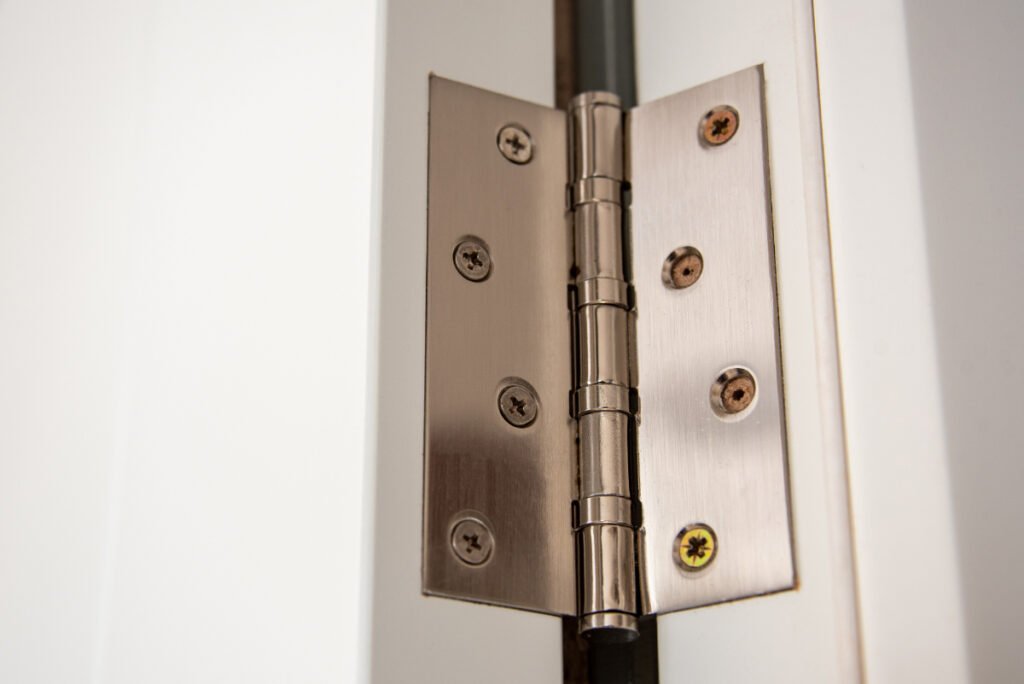
What Is It: Truck door hinges are heavy, tapered hinges with a base frame and an outer metal layer with additional trimmings that lifts heavier shutters and helps with a new garage door installation.
Truck door hinges are heavier, sturdier, and more secure. These are custom-made to suit the door panels and the garage door roller and are sold in kits. Moreover, they have a high-steel reinforcement grade and come with a universal fitting that adapts to most residential doors.
Truck door hinges can even hold some torsion springs for a smoother, noise-free door mechanism, making them more reliable.
Best Preferred For: Side-hinged, swing-out, or heavier and insulated Wayne Dalton sectional doors.
| Average Lifespan | 10 – 15 years |
| Average Cost | $4 – 5 |
| Prominent Materials | Mild or Galvanized Steel, Aluminum |
Pros:
- Customizable and Flexible.
- Sturdy and Long-lasting.
- Universal Fitting and doesn’t require any specialized screws or nuts.
Cons:
- Quite expensive and Difficult to Install.
- Cannot be used for a thinner, uninsulated metal or steel entry door.
- You’ll need professional help to install, replace, or repair these.
Use Vaseline or petroleum jelly to lubricate larger truck door hinges mess-free.
Why Are Garage Door Hinges Numbered?
Garage door hinges connect the shutter sections and anchor them to the main door frame at specific intervals. And they are often stamped with certain garage door hinge numbers indicating the area and the panel number for their installation.
Generally, any residential garage door hinge is numbered from one to five, whereas those for commercial doors are labeled from six to ten. Thus any hinge between the door’s bottom panel and the second last panel is the number one hinge, and that between the second and third panel is a number two hinge, and so on.
Tips for Picking the Right Garage Door Hinge for Your Shutters
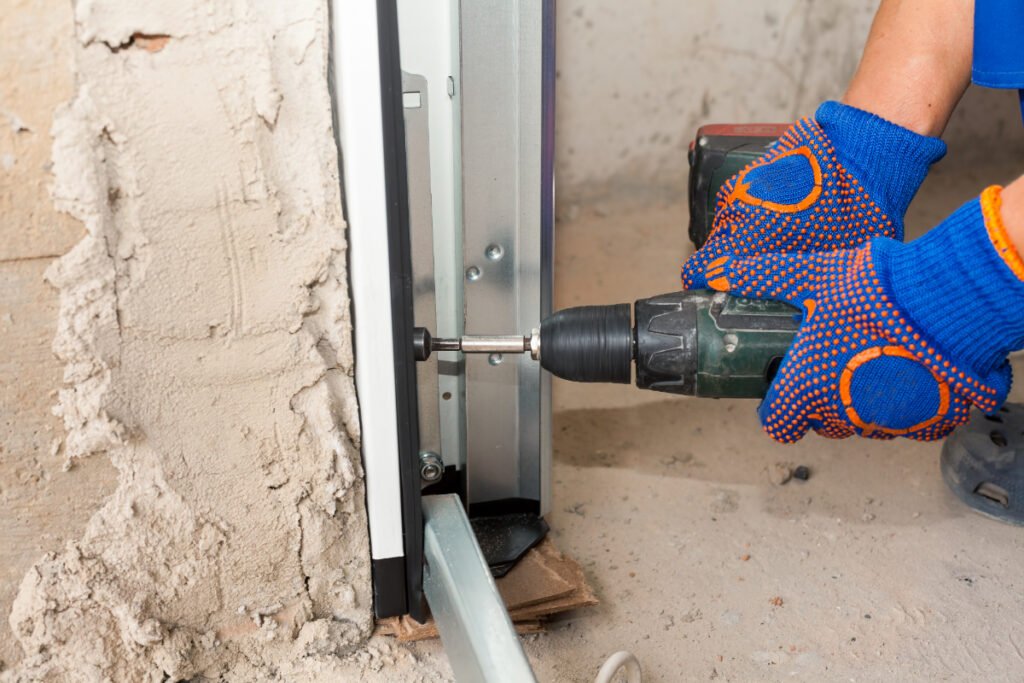
- Always pick a hinge with the same gauge or material thickness as the door for better strength and support.
- Pick 14-gauge hinges for residential doors while going with a thicker 11-gauge door for commercial applications.
- Always pick the right-numbered hinge according to your panel number for better support and a tight fit.
- Pick butt or strap hinges for lighter, swing-out doors while choosing sturdier truck hinges for heavy-duty sectional doors.
- Select flush or canopy hinges for a concealed, modern decor, and pick rustic strap or butt hinges for a traditional setting.
Are All Garage Door Hinges the Same?
Garage door hinges are standard and come with a 14 gauge for residential applications and an 11 gauge for commercial settings. Most of them have 2-3 holes, according to the panel number, and fit well to most wooden and steel doors. However, you can customize them to specific shapes, finishes, and polishes.
What Is the Strongest Type of Hinge?
A ball-bearing butt hinge is the most durable and sturdy residential garage door hinge and can effectively hold up to 200 – 250 pounds. Similarly, truck door hinges are the strongest for commercial applications and hold about 400 – 600 pounds.
What Are the Best Hinges for Outdoor Use?
Butt and flush hinges recess into the shutter panel and thus, provide better weather resistance and protection from climatic elements. However, you’ll need to use a canopy hinge if you have an overhead door, but you can polish it with anti-rust solutions and use a brushed finish for more durability.
How Are Hinge Sizes Measured?
Hinge sizes are calculated by measuring the hinge width, i.e., the distance between the ends of two leaves when the hinge is fully open, and the gauge or thickness of the hinge. To do so, remove the hinge from the door, lay it flat on a table, and measure the full height and width using a measuring tape.
Door hinges play a vital role in any garage door mechanism. They not only support and level the door but balance its extra weight and operate it efficiently! For better control, pick a good garage door spring!
But before you pick the hinges, make sure you have the type of garage door and garage door opener for your garage using our exclusive lists!

